Science and Sensibility
We were off to the Kensington Science Museum this morning, and the then walked home through Hyde Park. The Science Museum’s best exhibits are the steam engines, airplanes, and timepieces. They have James Watt’s workshop, reconstructed exactly as he left it when he died.

OK, maybe not exactly as he left it, the video projected on the wall is new. Wen he died, Watt was working on machines to copy sculpture, or as we would call them, 3D printers. Modern 3D printers start with empty space and fill in the bits you want with material. Watt’s version started with a block of material and cut away the bits you didn’t want, following the contours of an existing sculpture.
They have one of Watt’s earliest steam engines, as well.

This was used to pump water uphill to drive a water wheel when the river was low. That’s not the most efficient way of converting linear motion into rotary motion, so when Watt later came up with a four rod linkage that would do the same thing without the use of a water wheel he regarded it as his most ingenious invention.
Of course, steam can be used to drive railway cars. Here’s Stephenson’s Rocket from 1829.

The Rocket reached the unprecedented speed of twenty nine miles an hour. At speeds like that you could get from London to Manchester in a single day, rather than the three or four days taken by a stagecoach. What’s more, it was too fast for highwaymen to rob you. The public journey that the Rocket took on the newly opened Liverpool and Manchester railway also produced the first railway accident, when William Huskisson, distracted by a conversation with the Duke of Wellington, fell in front of the train and was killed. The ensuing publicity raised awareness of steam railways worldwide, and within ten years over 1,700 miles of railways had been built in Britain. The railway boom followed the canal boom in changing Britain forever.
Once upon a time you only needed one telephone directory for the whole United States.

Encryption device from 1780. A forerunner of the Enigma machine.

“H5”
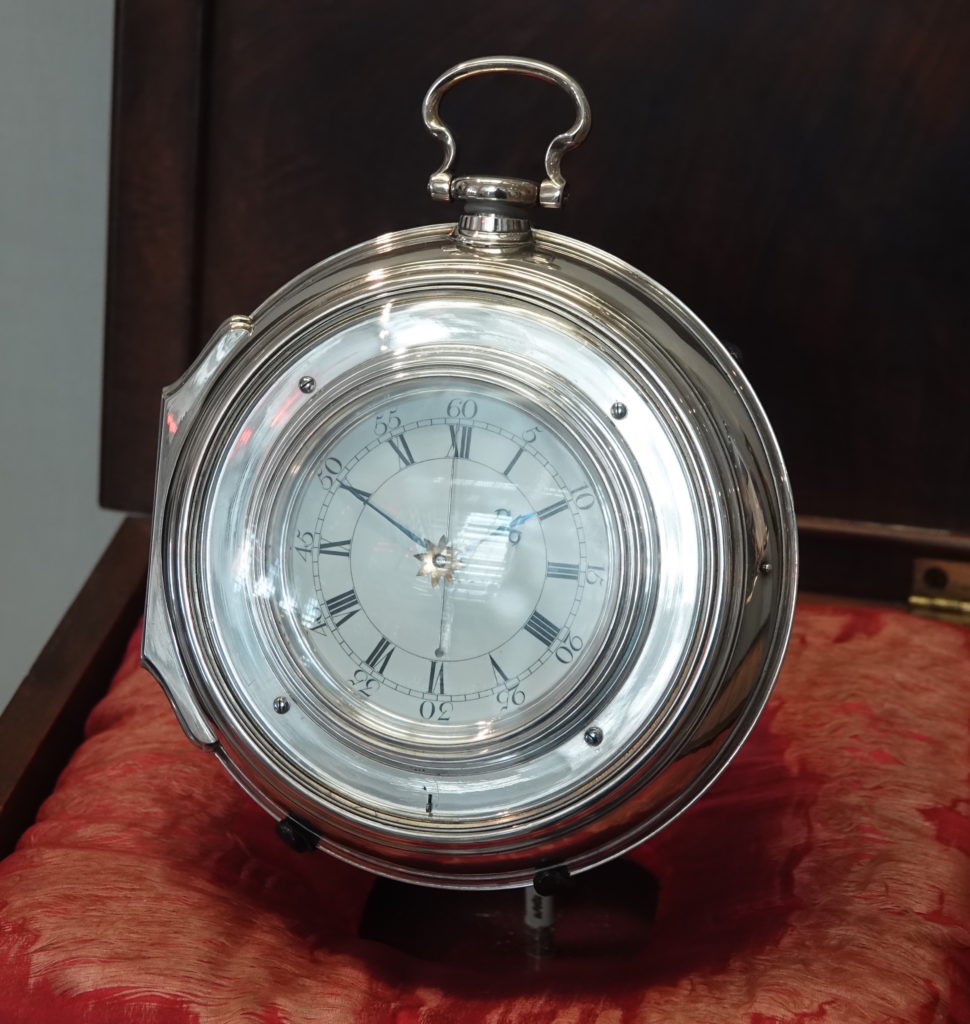
John Harrison’s fifth marine chronometer, finished in 1770. H4 is in the Royal Observatory at Greenwich. These were the first truly accurate marine timepieces. Accurate timekeeping allowed accurate navigation, and accurate navigation gave Britain an edge in both military and economic competition. The British Empire might not have happened without this clock.
The museum houses the collection of the Worshipful Company of Clockmakers, a London guild that started collecting clocks and watches in 1813. Think about that. Even if they had just put in the latest and greatest watches of they day, they would be two hundred years old by now.
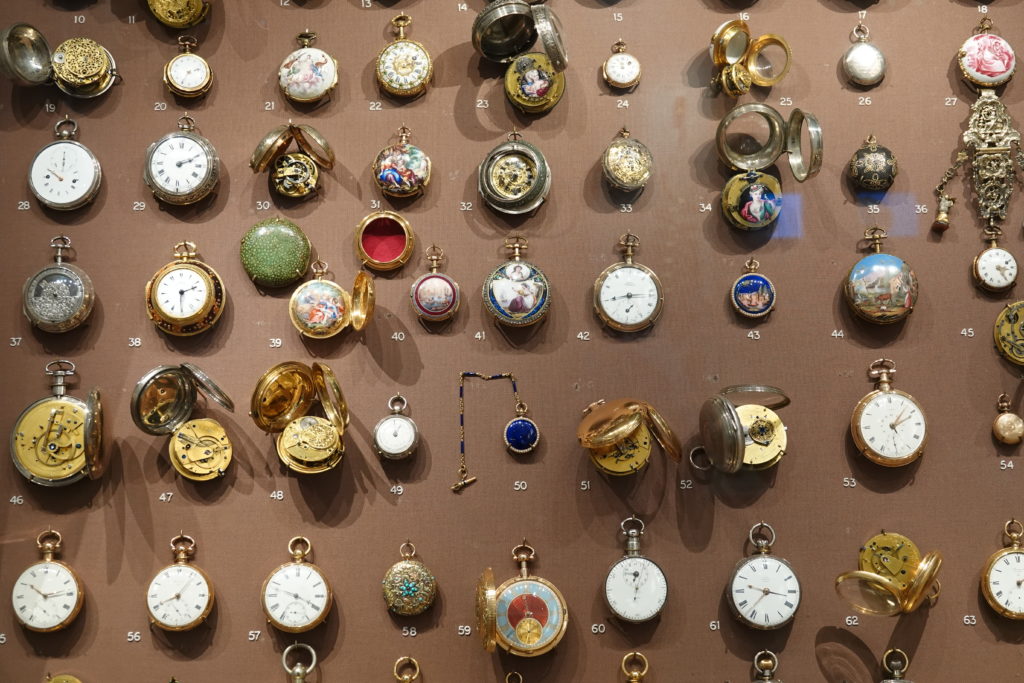
For twenty years the museum also housed the original Wright brothers flyer, the first controlled, manned, powered flying machine, which is now in the Smithsonian. This museum now has an exact copy made by De Havilland on the instructions of Orville Wright. There’s an interesting story behind that. Back in 1903 the Wright Brothers were not the only people working on powered flight. The Smithsonian itself had accepted a $50,000 contract from the US army to build a flying machine. Their secretary Samuel Langley built a machine called the Aerodrome, which was launched by a catapult from the roof of a houseboat, and immediately and repeatedly crashed into the lake. In other words it was a total failure. However, in 1913, an engineer called Glenn Curtiss wanted to invalidate the Wright Brothers’ patents, so he set out to prove that the Aerodrome could fly. The Smithsonian wanted to restore their battered reputation and go after other government contracts, so they loaned him the remains of the Aerodrome and turned a blind eye as Curtiss rebuilt the airframe and the wings, and replaced the engine and propellor, and actually managed to get the thing off the water for a few yards. The Smithsonian thereupon claimed that the Aerodrome was the first genuine flying machine. After disputing this for some years Orville Wright placed the original Wright flyer in the Kensington Science Museum as a protest. It was not until the 1940s that the Smithsonian finally owned up to their deception, and Wright agreed to return the plane to America, leaving behind an exact copy in London as a consolation prize.
It’s amazing how fast technology advances in times of war. In 1914 planes had not changed that much from the Wright flyer, but by the end of the First World War, this was the state of the art.
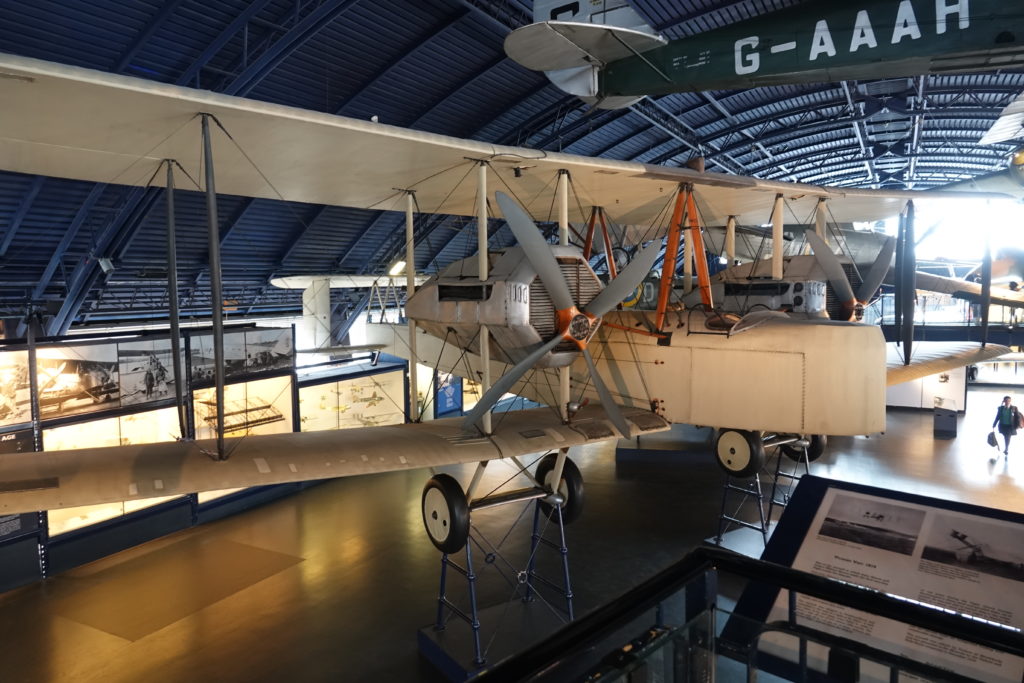
Designed in 1917, this Vickers Vimy was the first plane to cross the Atlantic. The flight in 1919 ended in what looked like a nice green field in Ireland, but turned out to be a bog, so the plane experienced some damage. It was patched up and sent straight to the museum, and has been there ever since. The Second World War pushed technology along as well. The Germans invented long range missiles (including cruise missiles), and jet fighters, while the allies came up with radar and nuclear bombs.
Prince Albert is dead. Just in case there is any doubt about this, here is the Albert Memorial.
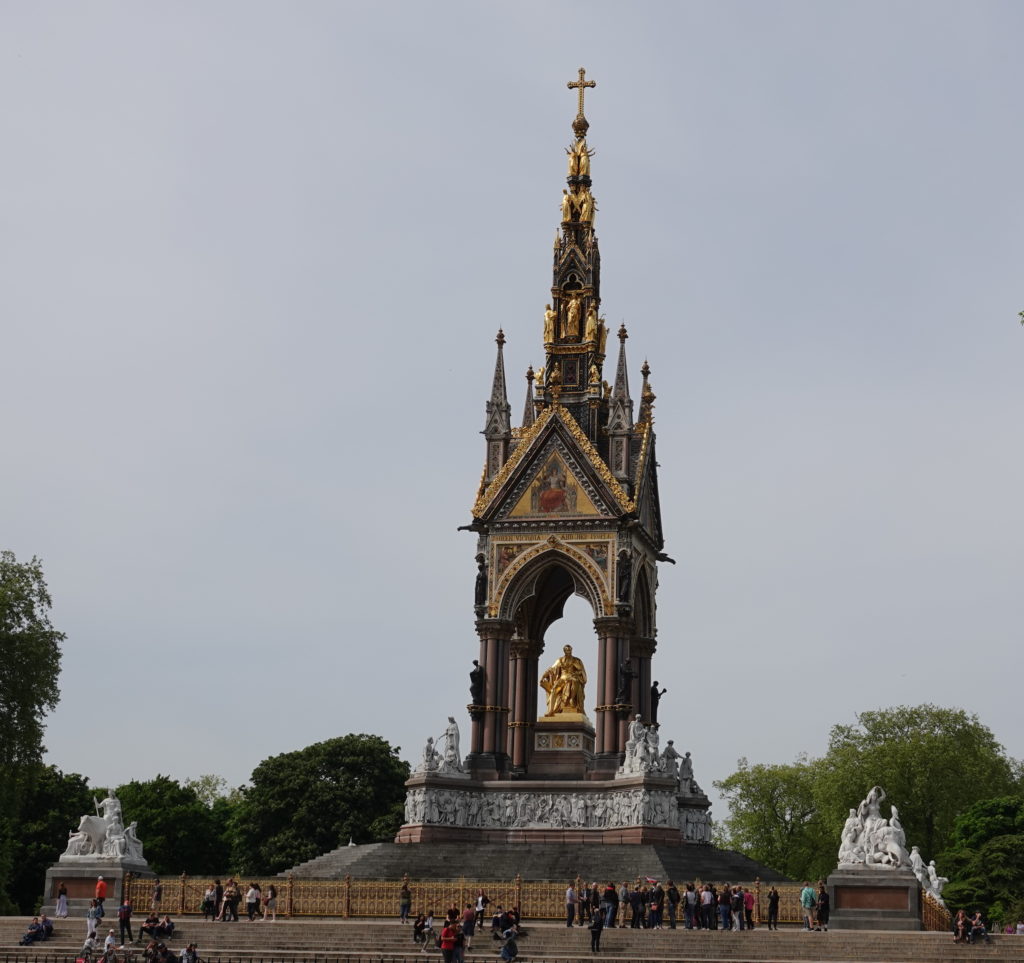
The Victorians had a very different sensibility when it comes to death. A Victorian biographer might devote a third of the entire book to chapters called things like “Final Decline”, “Last Words”, “Death”, “Funeral Arrangements”, “Reading of the Will”, “Funny Things That Happened At The Wake”, etc. In case anyone forgot that Prince Albert was dead, Queen Victoria commissioned one of the Ghastly Gothic Gilbert Scotts to construct a completely over the top tribute in Hyde Park. You’ve got your gothic spire, your gilded statue, your heroic frieze, your uplifting inscriptions, and your clumps of statuary depicting four continents. Asia, for example, is depicted by a group of racial stereotypes sitting on an elephant.
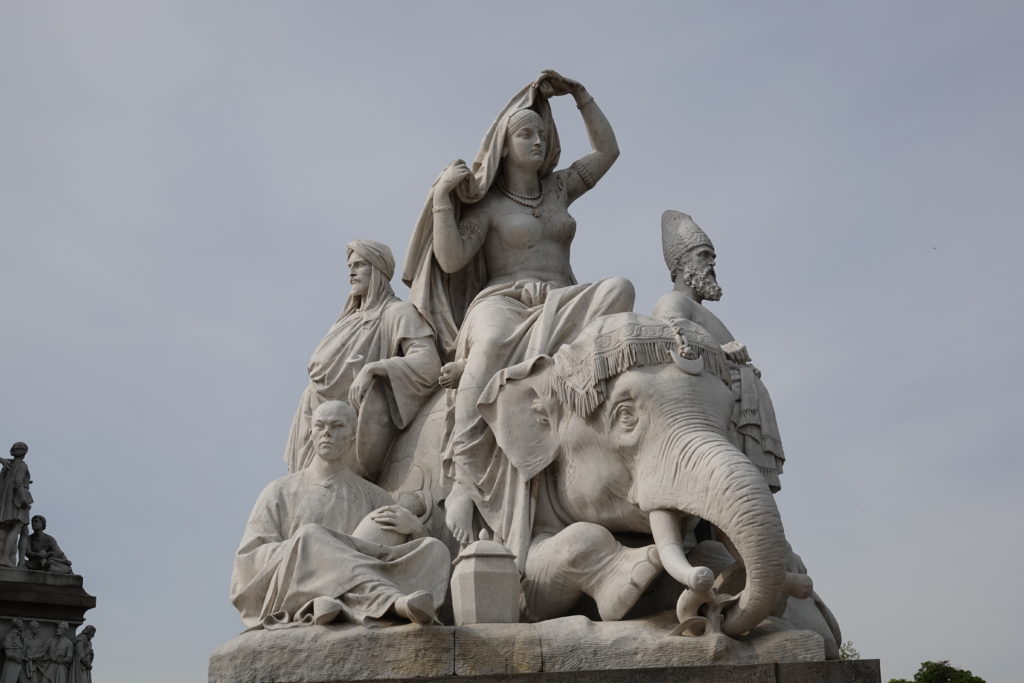
In America, however, we sit on bison.

“Welcome to America. Pull up a bison and sit down.” In Africa they sit on camels and in Europe on cows. I’ll have to remember to try that the next time we see a cow.
Hyde Park also has the Princess Diana Memorial Fountain (she’s dead, too) and the statue of Peter Pan with Wendy staring at his bum.

The also have feral parakeets who will come and eat out of your hand. Normally I think invasive species are a bad think, but these guys are not competing with the indigenous bird life for food, that’s for sure, they get it all from tourists.
